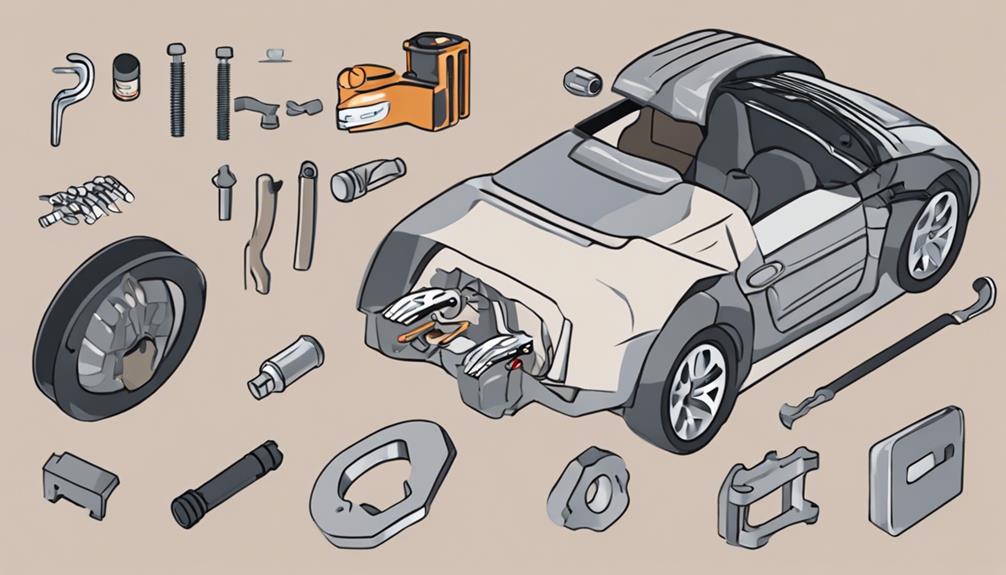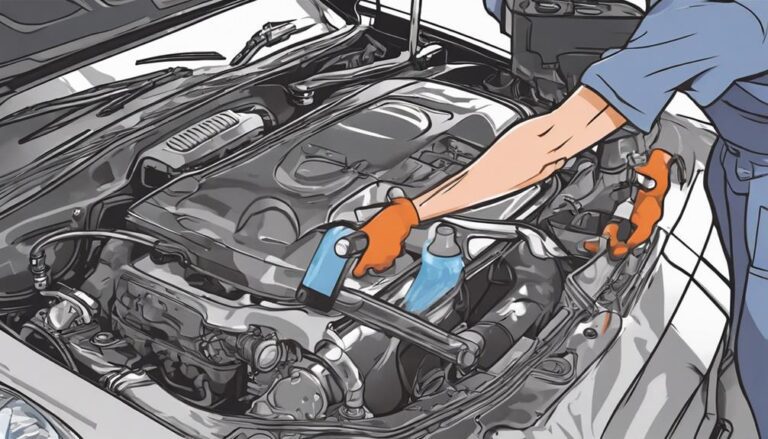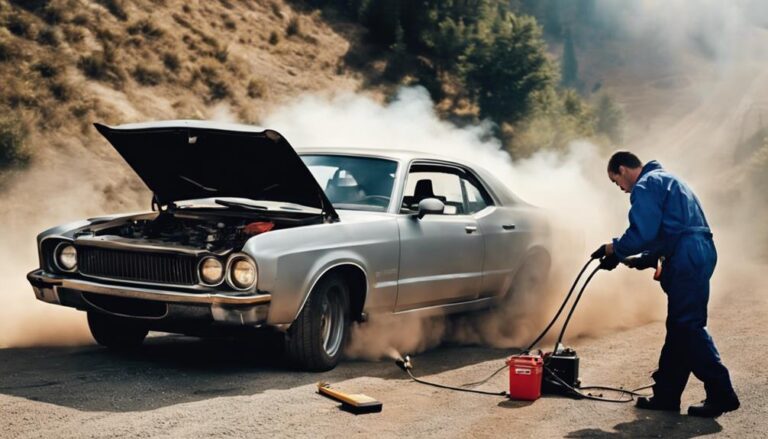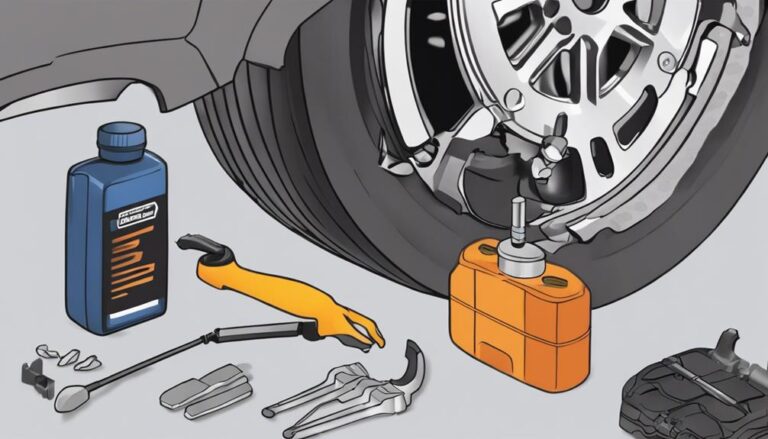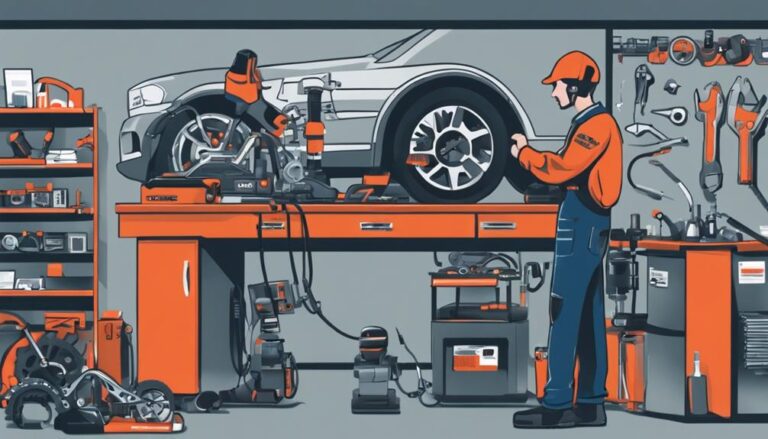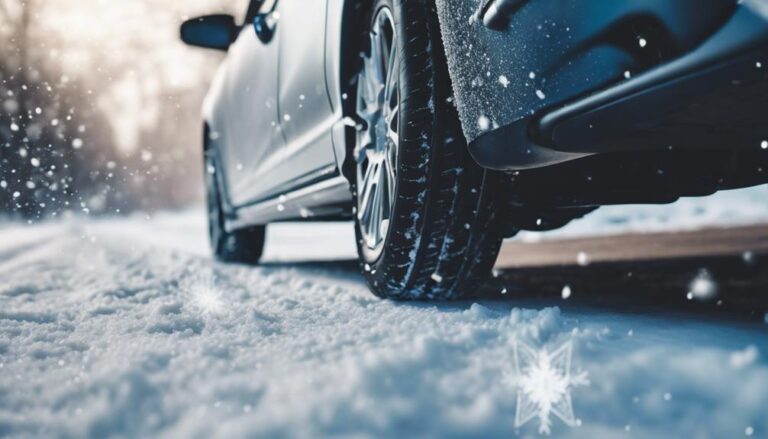Effective Brake System Maintenance Tips You Need
When it comes to vehicle maintenance, overlooking your brake system can lead to dangerous consequences. However, a few simple practices can make all the difference in keeping you safe on the road.
By implementing these effective brake system maintenance tips, you can ensure optimal performance and reliability from your brakes.
Key Takeaways
- Regular brake inspections, including checking calipers and fluid levels, are essential for optimal brake performance.
- Timely monitoring and replacement of brake fluid prevent decreased efficiency and potential brake failure.
- Recognize specific brake pad wear signs to address underlying issues promptly and ensure safe braking.
- Proper brake system lubrication with silicone-based products enhances performance, reduces noise, and extends component life.
Importance of Brake Inspections
Regular brake inspections are crucial for maintaining optimal brake performance and ensuring safe vehicle operation. Checking the brake calipers during these inspections is essential as they play a vital role in applying the necessary pressure to the brake pads, allowing for efficient braking.
Monitoring the brake fluid levels is equally important as it ensures that the hydraulic system can function correctly, preventing issues such as air bubbles that could compromise brake effectiveness. By inspecting the brake calipers, you can identify any signs of wear or damage that may affect their ability to squeeze the brake pads against the rotor effectively.
Additionally, maintaining proper brake fluid levels will help prevent brake failure and ensure consistent braking performance. Neglecting brake caliper maintenance and overlooking brake fluid levels can lead to decreased braking efficiency and potential safety hazards on the road. Make sure to include these checks in your regular brake inspections to keep your vehicle operating safely and smoothly.
Checking Brake Fluid Regularly
Monitoring the brake fluid levels at regular intervals is essential to ensure optimal brake system performance and safety. Brake fluid, over time, can absorb moisture which compromises its effectiveness. It's recommended to check the brake fluid every two years or as advised in the vehicle's manual.
Signs indicating the need for brake fluid replacement include a decrease in fluid levels, a dark coloration, or a spongy brake pedal feel. To maintain the integrity of the brake system, timely replacement of brake fluid is crucial. Professional inspection and brake fluid testing can also help determine the condition of the fluid accurately.
Neglecting the monitoring of brake fluid can lead to decreased braking efficiency and potential brake failure. By proactively checking and replacing brake fluid, you ensure that your vehicle's braking performance remains at an optimal level, enhancing safety on the road.
Understanding Brake Pad Wear Signs
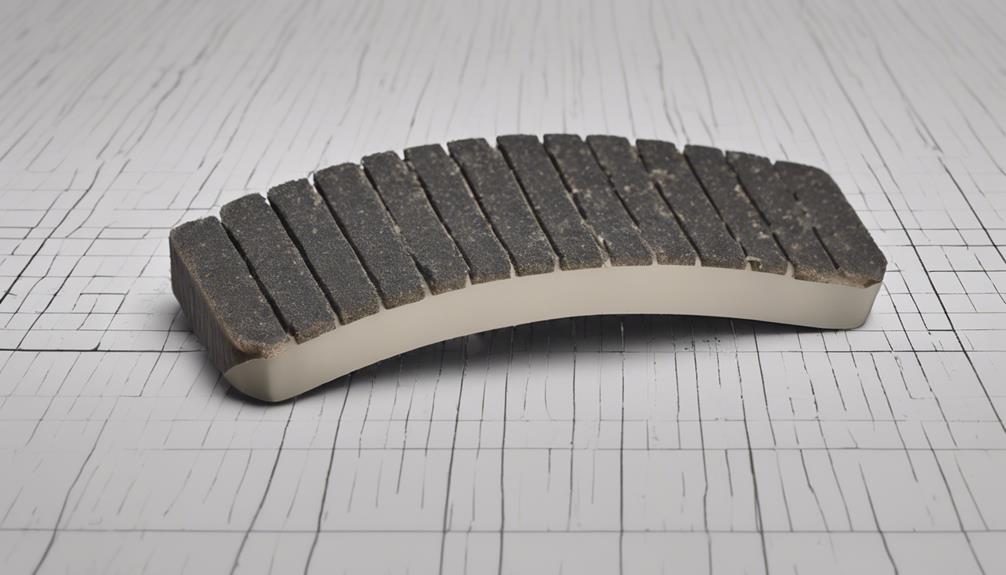
To accurately assess the condition of your brake pads, inspect for specific wear signs that indicate potential issues with your brake system components. Heavy wear on the outboard brake pad may point to problems with guide pins or bushings affecting brake pad alignment. Conversely, inner pad wear could be a red flag for a seized piston or master cylinder issue causing uneven brake pad wear. Excessive wear on one brake pad compared to the other might highlight potential caliper function or brake system balance issues. Uneven wear patterns on brake pads may suggest misalignment or problems with the brake caliper mechanism. Regularly monitoring brake pad wear can help in identifying and addressing potential brake system issues before they escalate.
| Brake Pad Wear Signs | Possible Issues |
|---|---|
| Heavy outboard pad wear | Guide pins or bushings affecting alignment |
| Inner pad wear | Seized piston or master cylinder problem |
| Excessive wear on one pad | Caliper function or balance issues |
| Uneven wear patterns | Misalignment or caliper mechanism issues |
| Regular monitoring | Early issue identification |
Proper Brake System Lubrication
Properly lubricating your brake system with a silicone-based brake lubricant is crucial for preventing squeaking, enhancing brake performance, and ensuring smooth movement of caliper slide pins. When it comes to lubricating your brake system, follow these essential techniques:
- Caliper Slide Pins: Apply a thin layer of silicone-based lubricant to the caliper slide pins. This will facilitate the smooth movement of the calipers, allowing them to apply even pressure on the brake pads.
- Backing Plate Contact Points: Lubricate the backing plate contact points where the brake pads come into contact with the caliper and piston. This reduces noise and vibration, ensuring a quieter braking experience.
- Regular Maintenance: Make sure to perform regular brake system lubrication to reduce friction and heat buildup. This not only extends the life of your brake components but also ensures consistent braking performance over time.
For optimal results, consider using high-quality silicone-based brake lubricants like Permatex Ultra Disc Brake Caliper Lube or 3M Silicone Paste. By following these lubrication techniques and product recommendations, you can maintain a well-functioning brake system and enjoy a smoother driving experience.
Brake System Upgrades and Replacements

Consider upgrading your brake system components to enhance performance and safety on the road. Performance enhancements can be achieved by switching to high-performance brake pads and rotors, which improve stopping power and reduce brake fade, crucial for demanding driving conditions.
For a better pedal feel and increased durability, opt for stainless steel brake lines. If you're looking to enhance heat dissipation and reduce brake noise, consider upgrading to slotted disc brakes. Ceramic brake pads are a great aftermarket option as they offer reduced brake dust and improved braking performance, ideal for daily driving.
To ensure you choose the right upgrades for your specific needs, consult a professional technician who can recommend suitable brake system enhancements based on your driving habits. By investing in these upgrades, you not only improve the performance of your vehicle but also increase overall safety on the road.
Frequently Asked Questions
What Maintenance Do Brakes Need?
To keep your brakes in top shape, ensure regular brake pad replacement when they're less than a quarter-inch thick and get a brake fluid flush every 2 years. These maintenance tasks are vital for optimal braking performance.
What Is the Most Efficient Braking Technique?
When braking, use proper technique by applying gradual pressure to the pedal for smooth, controlled stops. Avoid sudden emergency stops to extend brake life and maintain safety. Progressive braking enhances control, reduces wear, and improves fuel efficiency.
What Are the Requirements of a Good Braking System?
When you want your braking system performing at its peak, remember the essentials: regular brake pad replacement for optimal friction, brake fluid flush to keep pressure transferring smoothly, and well-maintained rotors and calipers.
What Is the Most Effective Braking System?
For the most effective braking system, prioritize high-performance brake pads and quality brake fluid. Opt for ceramic pads for reduced noise and better stopping power. Regular maintenance, including fluid changes, is crucial for optimal brake performance.
Conclusion
In conclusion, maintaining your brake system is like tending to a well-oiled machine – it ensures smooth and safe operation. Regular inspections, fluid checks, and addressing wear signs are crucial for optimal performance.
Remember, upgrading components can enhance stopping power. Treat your brakes with care, and they'll keep you stopping smoothly on the road ahead.

